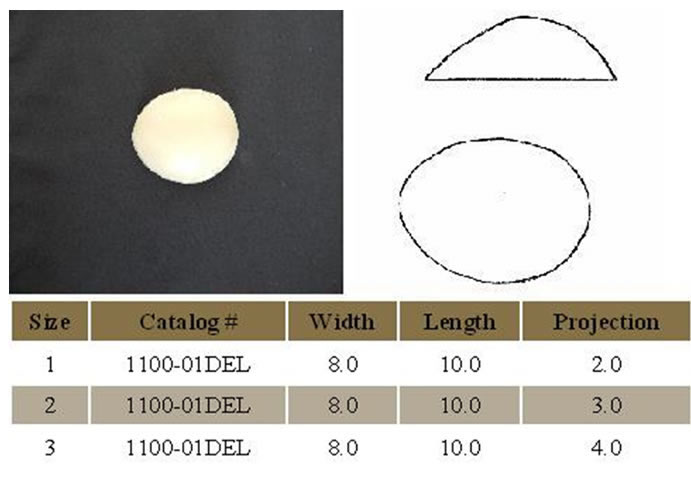DELTOID IMPLANTS – LOS ANGELES
Plastic Surgery for Men. Everything you need to know about Deltoid Implants and Muscle Augmentation Procedures.
 Trauma, oncologic surgery, and congenital conditions can alter the appearance of the shoulder girdle and produce noticeable asymmetries of the upper extremity. Dr. Nikolas Chugay designed a prosthesis to help in recontouring the deltoid region and help patients attain greater symmetry between the two arms. In addition, increased publicity given to sculpted physiques has driven many men in search of a more muscular appearance. Despite rigorous workout regimens, some men are not able to gain the volume and definition that they desire in the deltoid region. For that patient, a deltoid implant may help in giving a more muscular appearance.
Trauma, oncologic surgery, and congenital conditions can alter the appearance of the shoulder girdle and produce noticeable asymmetries of the upper extremity. Dr. Nikolas Chugay designed a prosthesis to help in recontouring the deltoid region and help patients attain greater symmetry between the two arms. In addition, increased publicity given to sculpted physiques has driven many men in search of a more muscular appearance. Despite rigorous workout regimens, some men are not able to gain the volume and definition that they desire in the deltoid region. For that patient, a deltoid implant may help in giving a more muscular appearance.
THE PROCEDURE
An incision is made in the area of deltoid muscle. The fascia (outer covering of muscles) that envelops the muscle is then dissected out. An incision is made in this fascia.
The implant is then placed in the pocket just below the fascia of the muscle. The muscle lining is sutured with absorbable sutures and subcuticular sutures are used to close the skin. Over time, the implant becomes surrounded by a scar tissue pocket, where it stays for the rest of the person’s life.
INDICATIONS
The primary indication for deltoid augmentation is correction of unilateral defects coming from trauma, oncologic surgery, and congenital anomalies. Congenital abnormalities of the skeleton, such as Sprengel’s deformity which results in one shoulder blade sitting higher than the other, can be treated by performing a unilateral deltoid augmentation to bring greater symmetry to the body, particularly in the lateral aspect. Muscular dystrophies and traumatic injuries to the brachial plexus which result in hypotonia to muscles of one arm can similarly be treated with a unilateral deltoid implant to create a more symmetric appearance to the upper extremities.
LIMITATIONS
Augmentation of the shoulder region does not improve function of the muscles or the upper extremity. Patients who present with conditions due to trauma or congenital abnormalities need to understand that the change will be purely cosmetic and will have no improvement in mobility or function of the affected limb.
IMPLANT SELECTION
Based on consultation with the surgeon, an implant will be chosen to provide the maximal aesthetic outcome in the safest way possible.

POST OP CARE/INSTRUCTIONS
Postoperatively the patient may begin ambulating starting on the evening of the procedure. Patients may experience some difficulty in abducting the operated arm as there is need for accommodation of the implant. This weakness will gradually resolve over the course of the ensuing weeks. Patients may shower POD 1, making sure to keep dressings clean and dry the Robbins tape with a hair dryer on a low heat setting. Patients are then allowed to begin light activity at week 2 and full unrestricted activity at weeks 4-6. All patients are asked to wear an ACE wrap around the deltoid region for four weeks post-operatively to prevent dead space, thereby helping to reduce the risk of seroma formation. If the patient is unable to use an ACE wrap effectively, a sleeved elastic garment may be used to provide compression to the region. Patients are prescribed both narcotic analgesics along with muscle relaxants (diazepam 5mg every 8 hours as needed for spasm) to assist with post operative pain and muscle spasms. All patients are prescribed prophylactic antibiotics.
COMPLICATIONS
In performing surgical deltoid augmentation procedures, complications can arise. Expert Cosmetic Surgeons who have over 30 years of experience on the cutting edge of implant procedures can substantially reduce the risk of complications, but it is important for you to be aware of the possibilities so that you take the proper care of your implants after surgery as advised by your doctor. Make sure you ask your doctor about these complications so you are an informed patient.
Potential Complications of Deltoid Augmentation Surgery
- Infection
- Seroma
- Hematoma
- Asymmetry
- Implant visibility
- Hypertrophic scarring
- Hyperpigmentation of the scar
- Capsular contracture
- Wound Dehiscence
- Nerve injury (permanent or temporary; motor or sensory)
- Compartment Syndrome
CONCLUSION
A semi-solid silicone implant can be used as a means of increasing volume to the lateral deltoid region to correct defects left following oncologic procedures, as a result of congenital defects, or following trauma. The implant can also be successfully used to augment a hypoplastic muscle in patients that are not able to achieve the desired results with conventional or even aggressive workout routines.

